|
|||||
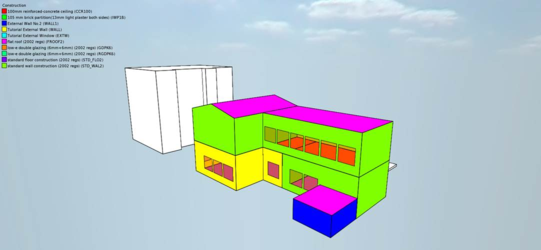
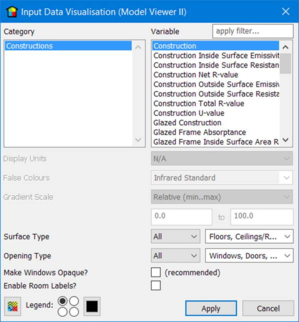
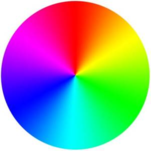 |
|
 |
|
|
|
|
Discrete
|
|
Continuous
|
|
|
Construction
|
The construction name and id of all constructions in use.
|
|
|
Construction U-value
|
The U-value as calculated by the user selected method of all constructions in use.
Calculation methods: EN-ISO / CIBSE / ASHRAE.
|
|
|
Construction Net R-value
|
The total thermal resistance as calculated by the user selected method of all constructions in use.
Calculation methods: EN-ISO / CIBSE / ASHRAE.
|
|
|
Construction Total R-value
|
The total resistance of all layers of all constructions in use (does not include inside and outside surface resistances).
|
|
|
Construction Outside Surface Emissivity
|
The emissivity of the outside surface of all constructions in use.
|
|
|
Construction Inside Surface Emissivity
|
The emissivity of the inside surface of all constructions in use.
|
|
|
Construction Outside Surface Resistance
|
The thermal resistance between the outside of a surface and its environment for all constructions in use.
|
|
|
Construction Inside Surface Resistance
|
The thermal resistance between the inside of a surface and its environment for all constructions in use.
|
|
|
Opaque Construction
|
The construction name and id of all opaque constructions in use.
|
|
|
Opaque U-value
|
The U-value as calculated by the user selected method of all opaque constructions in use.
Calculation methods: EN-ISO / CIBSE / ASHRAE.
|
|
|
Opaque Net R-value
|
The total thermal resistance as calculated by the user selected method of all opaque constructions in use.
Calculation methods: EN-ISO / CIBSE / ASHRAE.
|
|
|
Opaque Total R-value
|
The total resistance of all layers of all opaque constructions in use (does not include inside and outside surface resistances).
|
|
|
Opaque Thermal mass Cm
|
The thermal capacity per unit area and temperature rise of all opaque constructions in use.
|
|
|
Opaque Thermal mass class
|
The weight category describing the Thermal mass Cm of all opaque constructions in use.
|
|
|
Opaque Is Ground contact floor?
|
Whether or not the construction is marked as a ground-contact floor.
|
|
|
Opaque Is Ground contact wall?
|
Whether or not the construction is marked as a ground-contact wall.
|
|
|
Opaque Is Green roof?
|
Whether or not the construction is marked as a green roof.
|
|
|
Opaque Thickness
|
The thickness of all opaque constructions in use calculated as the sum of the layer thicknesses.
|
|
|
Opaque Mass
|
The area density of all opaque constructions in use as calculated from the densities and thicknesses of the construction layers.
|
|
|
Opaque Outside Surface Emissivity
|
The emissivity of the outside surface of all opaque constructions in use.
|
|
|
Opaque Inside Surface Emissivity
|
The emissivity of the outside surface of all opaque constructions in use.
|
|
|
Opaque Outside Surface Resistance
|
The thermal resistance between the outside of a surface and its environment for all opaque constructions in use.
|
|
|
Opaque Inside Surface Resistance
|
The thermal resistance between the inside of a surface and its environment for all opaque constructions in use.
|
|
|
Opaque Outside Surface Solar Absorptance
|
The fraction of incident solar radiation absorbed by the outside of a surface for all opaque constructions in use.
|
|
|
Opaque Inside Surface Solar Absorptance
|
The fraction of incident solar radiation absorbed by the inside of a surface for all opaque constructions in use.
|
|
|
Opaque Outside Surface Visible Light Reflectance
|
The reflectance of visible light by the outside of a surface for all opaque constructions in use.
|
|
|
Opaque Inside Surface Visible Light Reflectance
|
The reflectance of visible light by the inside of a surface for all opaque constructions in use.
|
|
|
Glazed Construction
|
The construction name and id of all glazed constructions in use.
|
|
|
Glazed U-value
|
The U-value as calculated by the user selected method of all glazed constructions in use.
Calculation methods: EN-ISO / CIBSE / ASHRAE.
|
|
|
Glazed Glass U-value
|
The Glass only U-value as calculated by the user selected method of all glazed constructions in use.
Calculation methods: EN-ISO / CIBSE / ASHRAE.
|
|
|
Glazed Frame U-value
|
The Frame only U-value as calculated by the user selected method of all glazed constructions in use.
Calculation methods: EN-ISO / CIBSE / ASHRAE.
|
|
|
Glazed Net R-value
|
The total thermal resistance as calculated by the user selected method of all glazed constructions in use.
Calculation methods: EN-ISO / CIBSE / ASHRAE.
|
|
|
Glazed Total R-value
|
The total resistance of all layers of all glazed constructions in use (does not include inside and outside surface resistances).
|
|
|
Glazed g-value
|
The solar transmittance value of all glazed constructions in use.
|
|
|
Glazed Shading Coefficient
|
The ratio of the instantaneous heat gain at normal incidence transmitted by a particular glass/blind combination to that transmitted by a reference glass.
|
|
|
Glazed Transmittance
|
The transmittance value of the window for solar radiation at normal incidence for all glazed constructions in use.
|
|
|
Glazed Shading Devices
|
The local, internal and external shading devices attached to all glazed constructions.
|
|
|
Glazed Is Electrochromic?
|
Whether or not the glazed construction contains an Electrochromic layer.
|
|
|
Glazed Electrochromic Profile
|
The modulating profile which determines when the electrochromic glazing is active.
|
|
|
Glazed Frame Percentage
|
The material percentage of the glazing element taken up by the frame.
|
|
|
Glazed Frame Absorptance
|
The ratio of the amount of radiation absorbed by a surface to the amount of radiation incident upon it.
|
|
|
Glazed Frame Resistance
|
The thermal resistance of the frame.
|
|
|
Glazed Frame Outside Surface Area Ratio
|
The outside surface area ratio of this frame. This is the material percentage of the outside surface taken up by the frame.
|
|
|
Glazed Frame Inside Surface Area Ratio
|
The inside surface area ratio of this frame. This is the material percentage of the inside surface taken up by the frame.
|
|
|
Glazed Frame Type
|
The type of frame material used in UK Part L compliance testing.
|
|
|
Glazed Outside Surface Emissivity
|
The emissivity of the outside surface of all glazed constructions in use.
|
|
|
Glazed Inside Surface Emissivity
|
The emissivity of the outside surface of all glazed constructions in use.
|
|
|
Glazed Outside Surface Resistance
|
The thermal resistance between the outside of a surface and its environment for all glazed constructions in use.
|
|
|
Glazed Inside Surface Resistance
|
The thermal resistance between the inside of a surface and its environment for all glazed constructions in use.
|
|
Infrared Standard
|
|
|
Infrared Cold
|
|
|
Infrared Warm
|
|
|
Infrared Hot
|
|
|
Spectrum Full
|
|
|
Spectrum Part
|
|
|
Spectrum Cold
|
|
|
Spectrum Mid
|
|
|
Spectrum Warm
|
|
|
Spectrum Hot
|
|
|
Mono Brown
|
|
|
Mono Sepia
|
|
|
Mono Blue
|
|
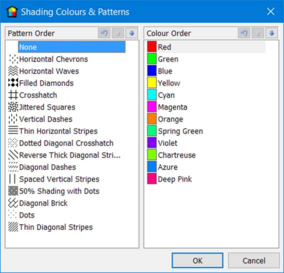 |
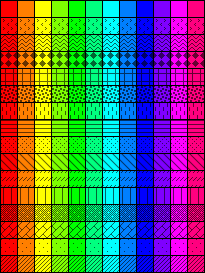 |
